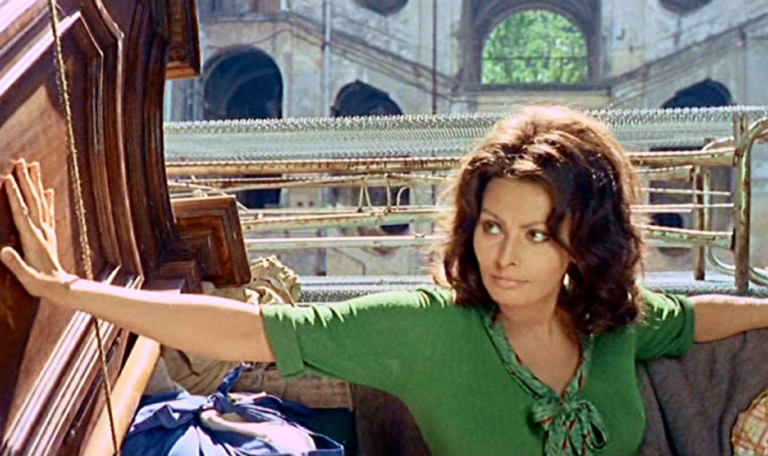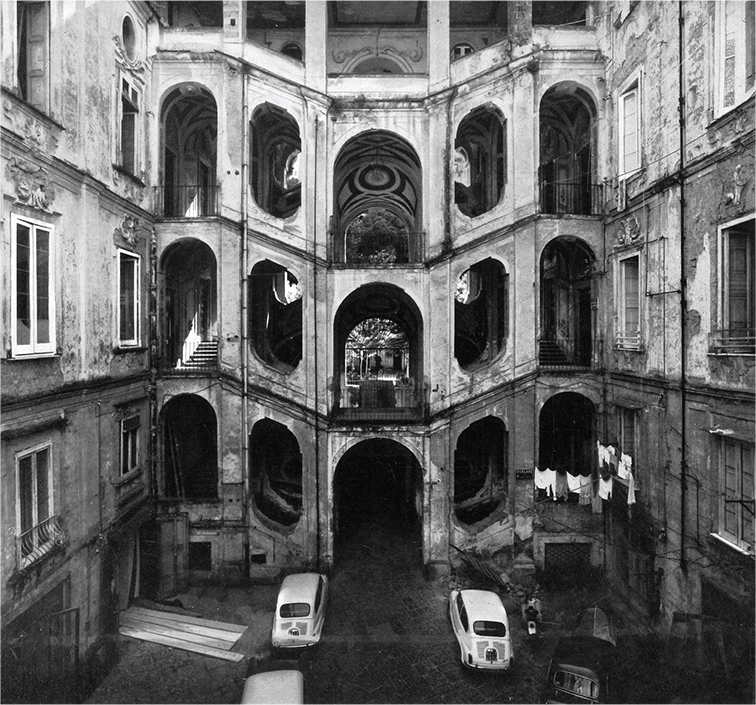

“The basic problem in designing a staircase which is visible on the façade of a building is that, if the flights run parallel to the façade, the windows or arches by which they are lit form a diagonal line which cuts across the horizontals of the floors; or if the staircase is on a square plan, with the flights running parallel with the façade and at right angles to it, the openings on the landings will come at levels half-way between the floors. Neapolitan architects showed the greatest ingenuity in either concealing or exploiting these irregularities.”
Anthony Blunt, Neapolitan Baroque and Rococo Architecture, 1975
This website shows the development of the Neapolitan open staircase typology at the moment that it shifted from the traditional, monumental Baroque palace staircase—usually only ascending up to the first floor—towards the later palazzo or condominium staircase that was serving four, five or more levels of apartments. Palaces and their staircases built from the 1720s onwards reflected the changes in the social structure of Naples’ upper classes and its congested urban condition. The staircase became the main feature of a typological makeover of the palace typology—a century before the invention of the mechanical lift would divert architectural explorations away from these wondrous structures.
Placed in cortiles ranging from sixteen to a mere four metres wide, the stairs are at times grand and imposing, at times cramped, yet always ingenious and disparate in form. They achieved a curious alliance between magnificence and confusion. Hardly any other singular architectural feature may illustrate better the acute observations by Walter Benjamin and Asja Lacis on the porosity of Naples’ urban texture in their 1925 article Neapel, published in the ‘Frankfurter Zeitung’: “Porosity results not only from the indolence of the southern artisan, but also, above all, from the passion for improvisation, which demands that space and opportunity be preserved at any price. Buildings are used as a popular stage. They are all divided into innumerable, simultaneously animated theaters. Balcony, courtyard, window, gateway, staircase, roof are at the same time stage and boxes.” At once theatre and conveyance, solving issues of aristocratic etiquette as well as practical plan arrangements, these stairs are showpiece and utility.
The website documents 14 stairs, by architects ranging from the illustrious Ferdinando Sanfelice (1675–1748) to his lesser known followers, such as Nicolò Tagliacozzi Canale (1691–1763) and Pompeo Schiantarelli (1746–1805).
Today, many of these structures survive, but he buildings have often been crudely subdivided. Palazzo Sanfelice, for instance, now counts no less than 44 separate apartments. Obviously, this has reflected on the state of the stairs. We found them, occasionally well taken care of and even restored, sometimes on the verge of crumbling, mostly in a condition somewhere in between. But always they were used in that quintessential, uncomplexed Neapolitan way.
The plaster models, drawings and photographs, and the two accompanying book volumes, are the outcome of a master seminar in Architectural History, held in 2017 and 2018 at the Department of Architecture and Urban Planning of Ghent University.
This website, the books and the exhibition are the collaborative work, over two academic years, of 48 students. I thank them for their enthusiasm and for the considerable effort to turn the seminar into two books, an exhibition and a website.
Dirk De Meyer
All texts © Dirk De Meyer and A&S/books
All drawings and photographs © the students, Dirk De Meyer and A&S/books, unless otherwise indicated.